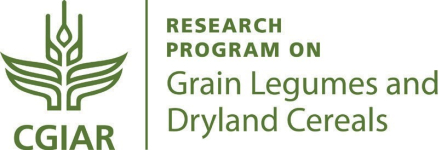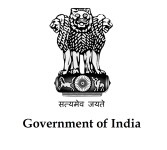Bhoosamrudhi: Improving Rural Livelihoods through Innovative Scaling-up of Science-led Participatory Research for Development
Published on: April 4, 2019, Submitted by Kumar Shalander on: April 4, 2019, Reporting year: 2018
The program, started in 2013, covered 80,000 ha and tested various innovative technologies at each pilot site in Karnataka state, India. Integrated Nutrient Management (INM), Integrated Pest Management (IPM), water management, mechanization, crop intensification, crop diversification and fodder development were promoted. A consortium of national and international research institutes was formed to scale up various Natural Resources Management (NRM) technologies. Best management practices along with improved cultivars increased crop yield by 15-40%.
Millets for Nutrition Security
The innovative scaling-up program was piloted in eight districts representing four revenue divisions of Karnataka state. It covered 80,000 ha and promoted various innovative technologies at each pilot site in the state since 2012. A number of interventions such as INM, Integrated Pest Management (IPM), water management, mechanization, crop intensification, crop diversification and fodder development were promoted. A consortium of national and international research institutes was formed to scale up various Natural Resources Management (NRM) technologies. Best management practices along with improved cultivars increased crop yield by 15-40%; enhanced land and water use efficiency by 15-20%; gave additional income of Rs. 8000 to 10000 per ha to farmers.
The farmers benefitted from improved cultivars of finger millet with an increased yield of 63% over the local cultivars. Varieties and cultivars of crops like pearl millet (HHB 67) demonstrated good benefits in terms of reducing downy mildew and increasing crop yields substantially. Rice and maize fallows were also used for cultivating green gram, while chickpea and vegetable cowpea benefited farmers an additional income of ₹ 15000 to ₹ 20000 per ha. This initiative was demonstrated in 1,100 ha to farmers and was widely adopted by farmers. Pigeonpea hybrid ICPH 2611 and ICPH 2740 were preferred by the farmers across the districts, as hybrids of pigeonpea produced 25 to 66% more yield in different districts over local cultivars.
In order to address the issues of water scarcity in pilot areas, direct seeded rice (DSR) was demostrated and promoted. Under DSR, the water use efficiency increased substantially to 0.53 kg / m3 of water as compared to 0.36 / m3 of water in the transplanted paddy. With drip, for DSR with laterals at 80 cm, water use efficiency increased to 1.5-2.0 kg per m3 of water resulting in 60% savings of water and yielding ₹38,000 net income per acre as compared to an income of ₹22,000 per ha under transplanted condition.
Mechanization of agricultural operations benefitted farmers for enhancing water-use efficiency by 15 to 20%. Using the power weeders, farmers could save ₹4000 to ₹5000 per ha in cash crops like sugarcane and cotton. Easy planters which are manually operated saved ₹3000 to ₹4000 per ha for transplanting as well as for dibbling of the seeds using seed dibbler. Nipping machine in pigeonpea helped cut down the labor cost for apical bud nipping operations and increased pigeonpea crop yield by 7 to 8%.
The innovative scaling-up program was piloted in eight districts representing four revenue divisions of Karnataka state. It covered 80,000 ha and promoted various innovative technologies at each pilot site in the state since 2012. A number of interventions such as INM, Integrated Pest Management (IPM), water management, mechanization, crop intensification, crop diversification and fodder development were promoted. A consortium of national and international research institutes was formed to scale up various Natural Resources Management (NRM) technologies. Best management practices along with improved cultivars increased crop yield by 15-40%; enhanced land and water use efficiency by 15-20%; gave additional income of Rs. 8000 to 10000 per ha to farmers.
The farmers benefitted from improved cultivars of finger millet with an increased yield of 63% over the local cultivars. Varieties and cultivars of crops like pearl millet (HHB 67) demonstrated good benefits in terms of reducing downy mildew and increasing crop yields substantially. Rice and maize fallows were also used for cultivating green gram, while chickpea and vegetable cowpea benefited farmers an additional income of ₹ 15000 to ₹ 20000 per ha. This initiative was demonstrated in 1,100 ha to farmers and was widely adopted by farmers. Pigeonpea hybrid ICPH 2611 and ICPH 2740 were preferred by the farmers across the districts, as hybrids of pigeonpea produced 25 to 66% more yield in different districts over local cultivars.
In order to address the issues of water scarcity in pilot areas, direct seeded rice (DSR) was demostrated and promoted. Under DSR, the water use efficiency increased substantially to 0.53 kg / m3 of water as compared to 0.36 / m3 of water in the transplanted paddy. With drip, for DSR with laterals at 80 cm, water use efficiency increased to 1.5-2.0 kg per m3 of water resulting in 60% savings of water and yielding ₹38,000 net income per acre as compared to an income of ₹22,000 per ha under transplanted condition.
Mechanization of agricultural operations benefitted farmers for enhancing water-use efficiency by 15 to 20%. Using the power weeders, farmers could save ₹4000 to ₹5000 per ha in cash crops like sugarcane and cotton. Easy planters which are manually operated saved ₹3000 to ₹4000 per ha for transplanting as well as for dibbling of the seeds using seed dibbler. Nipping machine in pigeonpea helped cut down the labor cost for apical bud nipping operations and increased pigeonpea crop yield by 7 to 8%.
Stage of Maturity and Sphere of influence
-
Stage of Maturity: Stage 3
-
Contributions in sphere of influence:
Acknowledgement
The activity has been conducted by the International Crops Research Institute for the Semi-Arid Tropics (ICRISAT), in collaboration with the Government of Karnataka, India, in the framework of the CGIAR Research Program on Grain Legumes and Dryland Cereals (GLDC). All farmers taking part in this participatory activity are warmly thanked for their support and are encouraged in spreading the practices for better livelihoods of the local communities.




